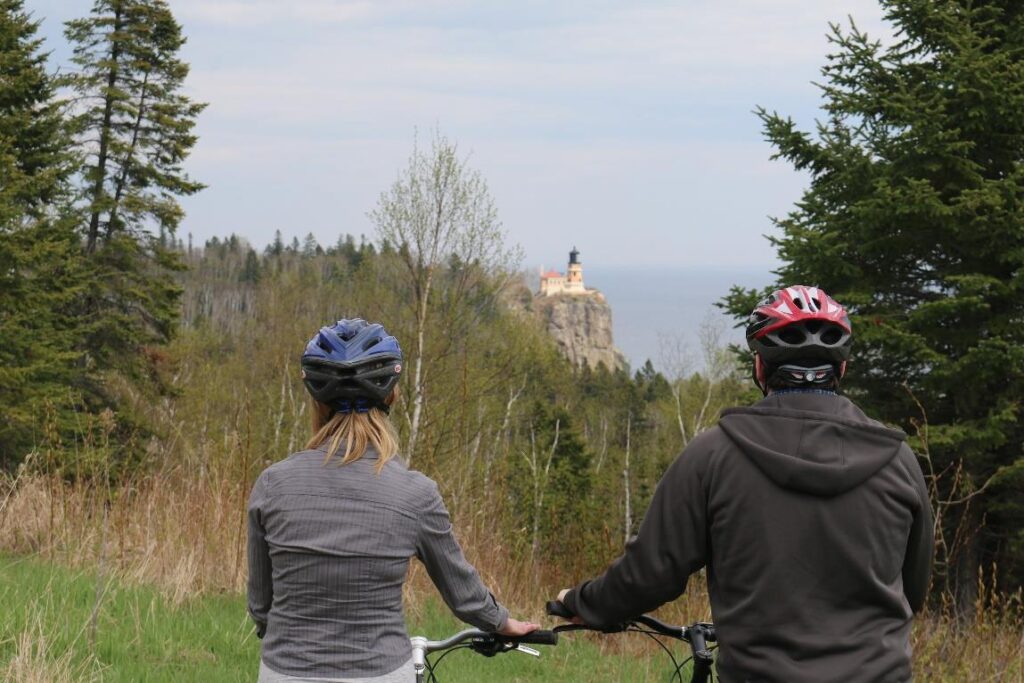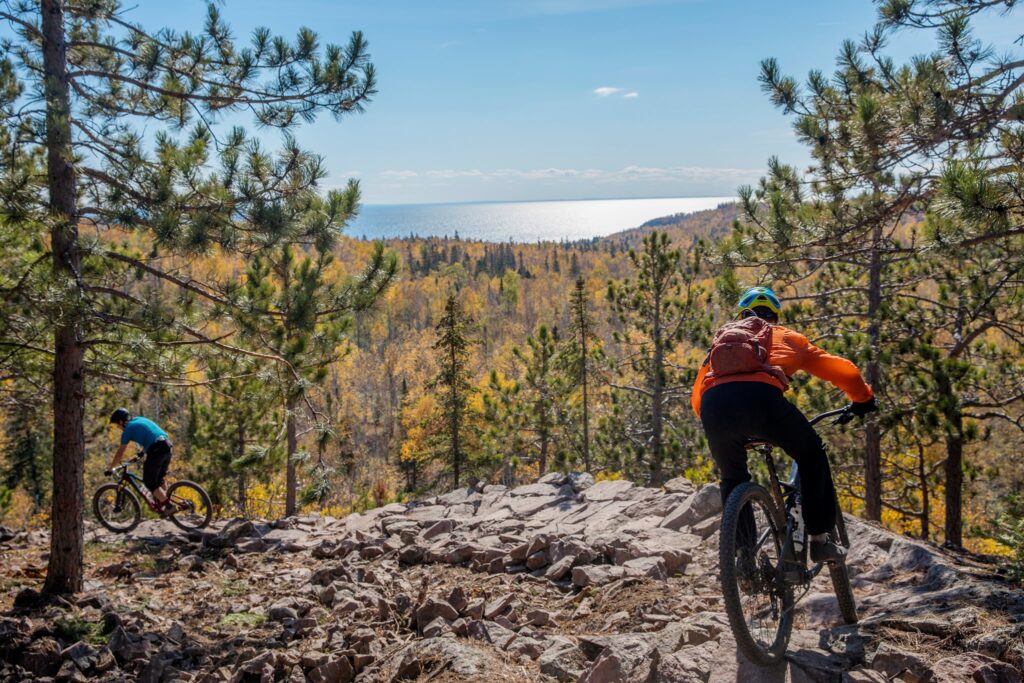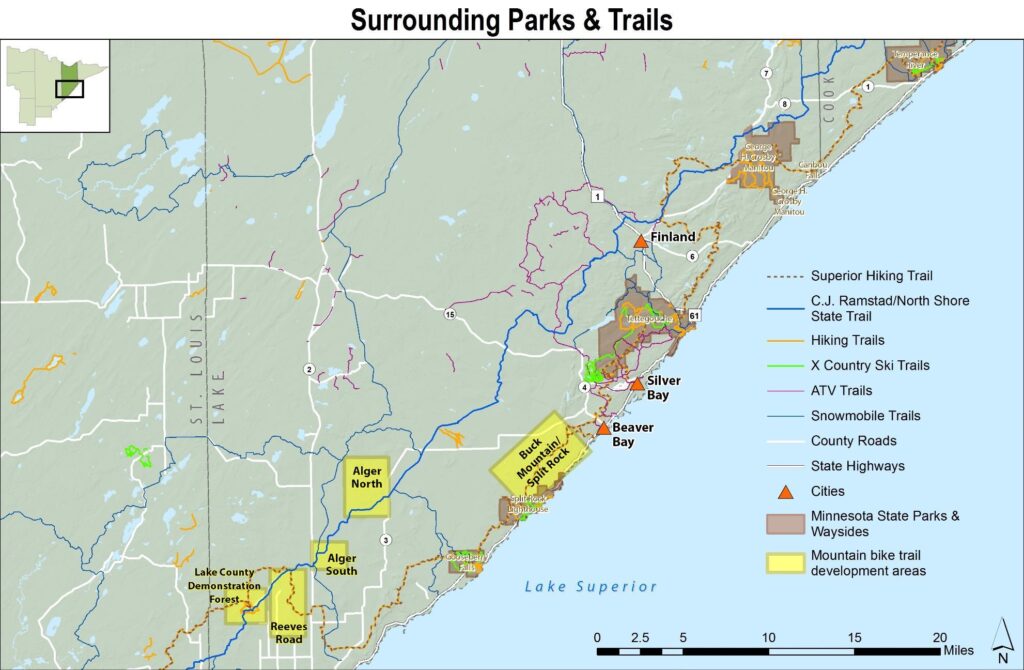
Around the same time the Boundary Waters Canoe Area Wilderness Act was passed in 1978, daring bicyclists in San Francisco were riding down the surrounding mountains. Four decades later, northeastern Minnesota is well known for canoeing, hiking, and fishing — and mountain biking has arrived in the region.
In the past decade, hundreds of miles of new mountain bike trails have opened in northeastern Minnesota. The region is now earning a reputation as a destination for the popular sport.
With funding from the Minnesota lottery, the Iron Range Resources and Rehabilitation Board, and other public sources, trails have been built in Duluth, the Iron Range, and up the North Shore of Lake Superior.
MPR News recently reported that 250 miles of new mountain biking trails have been built in northeastern Minnesota since 2011. That is when the first major trail system opened at the Cuyuna Lakes Recreation Area near Crosby, where riding through a former iron mine quickly became popular.
The economic benefits were significant, providing year-round revenue with the popularity of riding “fat bikes” on snow-covered trails. It became a model for other parts of the region with significant public land and topographic relief.
“What’s happening in Minnesota is pretty unprecedented,” Scott Linnenburger, a Colorado-based trail builder told MPR News.

The trails are almost all developed by partnerships of mountain bike advocacy groups, government, volunteers, trail-building companies, and local businesses.
Lake County is the most recent to open mountain bike trails. The county is working on two systems on its land in the hills above the North Shore. There are about 10 miles of trails at the Lake County Demonstration Forest near Two Harbors. A new system called “Split Rock Wilds” will start at a Split Rock State Park campground as soon the campground opens. It could ultimately grow to 50 miles of trails reaching all the way to Beaver Bay.
The county anticipates 22,000 riders will visit the trails per year, a majority from outside the county. There is a large base of riders in Duluth, an hour away, according to the IRRRB.
The trails are built for a variety of styles of riding, from simple singletrack paths up and down and around the hills, or for “flow,” a fast trail with berms on the corners. Some are rocky, technical trails that take serious skills.

They are also built to last, and reduce environmental harm. Poor water management not only leads to erosion, it destroys trails. Builders have developed techniques and training to properly construct trails. The Demonstration Forest trails in Lake County are notable for being located on an esker, glacial sand and gravel, which riders are excited for because it should drain quickly and be open more.
“The biggest thing about mountain biking trails is making them sustainable, and making sure that you get the water to do, maybe not exactly what you want it to do, but at least it’s predictable what the water is going to do,” Dave Cizmas of Lake County told MPR News.
Professionals often build the trails, which are then maintained by local volunteers. High quality trail construction can cost $50,000 or more per mile, with several companies from throughout the Midwest offering services.
More information:
- As mountain biking booms in Minnesota, pro builders help meet the demand for trails – MPR News
- Rugged terrain lures mountain bikers to northeastern Minnesota’s booming trails – MPR News
- Biking in Lake County – Lovin’ Lake County
- Growth in state’s new mountain biking trails goes for a different mix – Star Tribune
- Lake County builds new bike trails – Northern Wilds



